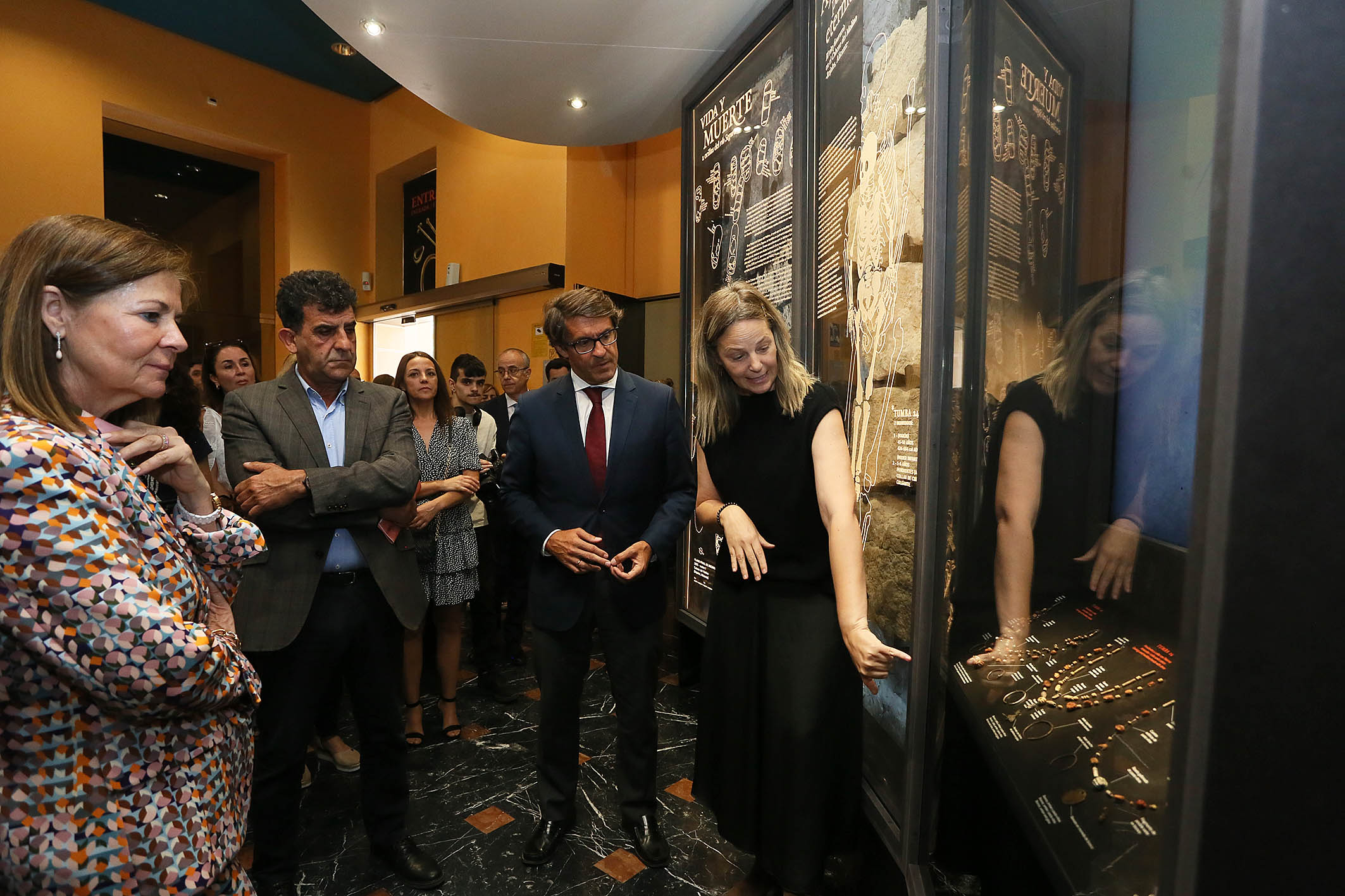
The exhibition area of the MARQ Foyer presented this morning "Ajuares para la eternidad. The funerary rite at Cabezo del Molino".. The twenty-first exhibition presented in this space, destined to exhibit unique archaeological pieces, will show for a year four sets of Byzantine jewellery found in the necropolis of the site located in Rojales.
The Deputy for Culture, Juan de Dios Navarrohas inaugurated a new proposal curated by Mª Teresa Ximénez de EmbúnThe exhibition is the result of the results obtained from the research work carried out since 2018 at the Cabezo del Molino site. "This exhibition stems from the results obtained in the research work carried out since 2018 in the Cabezo del Molino enclave, a project that is part of the Annual Excavations Plan of the Provincial Council of Alicante, through the MARQ, with the collaboration from the beginning of the Rojales Town Council and the Archaeological and Palaeontological Museum of this town," said Navarro.
Through an innovative museography, explanatory panels and a narrative video, 'Trousseaus for eternity' shows a particular moment in history. The Cabezo del Molino is one of the first sites in the province where it has been possible to confirm the presence of Byzantine-era population (6th-7th centuries AD), in this case through a large necropolis which is also one of the first examples in our territory of Christian communities in the rural world.
The excavations revealed a large number of children's burials found - most likely victims of the severe epidemic known as the "Justinian plague- and the location of a group of female graves of very young ages -between 6 and 12 years old- who were treated in a very special way in the face of death. These girls died a sudden and premature death that prevented them from performing rituals of great social relevance, such as marriage, during their lifetime.
For this reason, at their death and with the utmost care, they were dressed in a special way, with bridal jewellery. In these cases, as Ximénez de Embún explained, "the documented funeral rite has been impressive and moving, and has left us with a series of sets of images of the bride and groom, which we have seen in the past". consisting of necklaces and earrings, made of high quality raw materials such as amber, bronze and silver, vitreous paste or semi-precious stones such as carnelian and turquoise.".
The presentation of the exhibition, organised in cooperation with the Banco Sabadell FoundationThe project also involved the participation of the regional director Alicante Centro of Banco Sabadell, Ana Ponsodathe director of MARQ, Manuel Olcinaand the managing director of the Fundación CV MARQ, José Alberto Cortés.
